
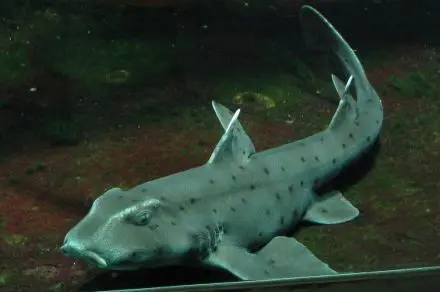

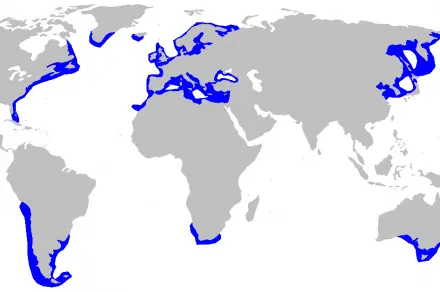

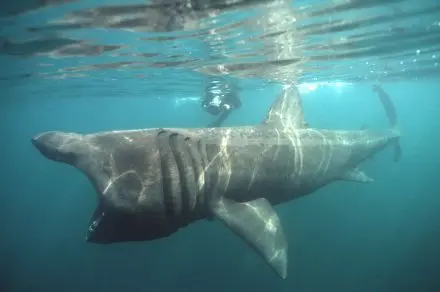
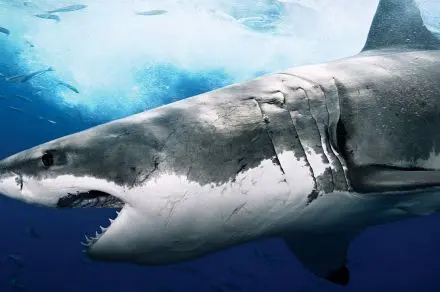
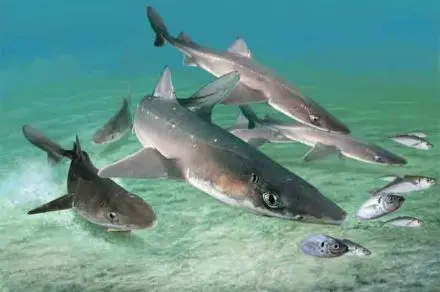

Large superorder of cartilaginous fishes. The appearance of these animals is very recognizable and familiar to most people from early childhood. The shark, in the understanding of the majority, has an elongated torpedo-shaped body, a large number of sharp teeth, a curved dorsal fin, and so on. In fact, many lesser-known fish of this species have very exotic forms and do not fit this description. More than 450 species of sharks are currently known. From the point of view of biology, it is worth noting that sharks have adapted very well to the conditions of existence. Their way of life and ability to adapt have allowed the species to evolve for about 450 million years. A characteristic feature is the presence of a cartilaginous, rather than a bone skeleton. In Russian, the word “shark” comes from the Old Norse “hákall”. According to the way of life and ecology, sharks cannot be combined into one group. They have adapted to almost any environment. There are cases of shark sightings at depths of more than 3700 m. And at the same time, a significant part of the species leads a pelargic lifestyle in near-surface waters. Many species have adapted to life in the coastal shallow water zone and so on. Sharks live in almost all the seas associated with the oceans. The size of sharks varies greatly, from 17 cm to 20 m. Lifestyle can vary depending on the life cycle and living conditions. Even recognized loners periodically form clusters, and lead an active flock of life. It is important to note that some species of sharks have adapted to life not only in the salty or brackish waters of river estuaries, but can also perfectly exist in the fresh waters of large rivers.
Fishing methods
With regards to trophy fishing, amateur fishermen are primarily interested in sharks – active predators living in open spaces or in the coastal strip of tropical seas. For most residents of the northern part of Eurasia, such fishing is rather unusual. The most interesting shark fishing trips are organized by tourist organizations in the tropical regions of the oceans. It can be fishing from yachts and boats using trolling gear or ocean-class spinning rods. For fishing, both artificial and natural baits are used, fish are often lured with various baits of animal origin. A fairly well-known place for catching sharks from the shore is the coast of Namibia, the Skeleton Coast. In the Russian Far East, huge sharks – predators – loners are not often found, and it is not worth connecting a trip there with such specimens. These lands are already very exotic for the inhabitants of the European part. Nevertheless, several species of sharks enter the northern waters of the Russian coast. Including, herring shoals are followed by the so-called. “herring sharks”. And yet, a resident of European Russia, with a great desire to catch a shark, does not have to go to exotic tropical countries. The capture of this species is quite accessible, for example, in the Black Sea. A small shark lives there – a katran, which often becomes a catch for local fishermen.
Shark trolling
Sharks, along with other large marine predators, are considered very worthy opponents because of their size and temperament. To catch them, you will need the most serious fishing tackle. For an active search for fish, the most suitable method is trolling. Sea trolling is a method of fishing with the help of a moving motor vehicle, such as a boat or boat. For fishing in the ocean and sea open spaces, specialized vessels equipped with numerous devices are used. The main ones are rod holders, in addition, boats are equipped with chairs for playing fish, a table for making baits, powerful echo sounders and more. Rods are also used specialized, made of fiberglass and other polymers with special fittings. Coils are used multiplier, maximum capacity. The device of trolling reels is subject to the main idea of such gear – strength. A mono-line, up to 4 mm thick or more, is measured, with such fishing, in kilometers. There are quite a lot of auxiliary devices that are used depending on the fishing conditions: for deepening the equipment, for placing baits in the fishing area, for attaching bait, and so on, including numerous items of equipment. Trolling, especially when hunting for sea giants, is a group type of fishing. As a rule, several rods are used. In the case of a bite, for a successful capture, the coherence of the team is important. Before the trip, it is advisable to find out the rules of fishing in the region. In most cases, fishing is carried out by professional guides who are fully responsible for the event. It is worth noting that the search for a trophy at sea or in the ocean may be associated with many hours of waiting for a bite, sometimes unsuccessful.
Catching sharks by drifting
Shark fishing by drifting involves the use of specially equipped boats or boats with rod holders. It should be borne in mind that the size of the trophies can be very significant, which requires special training from the organizers of fishing. Fishing is carried out with the help of marine rods with snaps for natural baits. The “drift” itself is carried out due to sea currents or wind. In most cases, fishing is carried out with the luring of predators by various baits of the animal composition. On the rig, some anglers use large bobber bite alarms. The slow movement of the vessel increases the fishing space and creates an imitation of the movement of the bait.
Baits
Depending on the method of fishing, different baits are used. It is a fairly well-known fact that sharks are fish with a very perfect system for perceiving food stimuli, including highly developed analyzers of the chemical composition of the environment. Therefore, fishermen most often use baits that exude the smells of animal flesh. When fishing for trolling, as the basis of the bait, imitations of marine life are used: fish, mollusks, and so on. In the case of fishing with classic spinning tackle, these are large volumetric nozzles – all kinds of modifications of wobblers for various purposes. Places of fishing and habitat As already mentioned, sharks are very widespread throughout the World Ocean and its seas. Depending on the species, the distribution areas of these fish cover all latitudes and climatic zones. Most species inhabit the open spaces of the salty waters of the seas, but some actively hunt in large rivers, going upstream for tens of kilometers.
Spawning
An important feature of the species is internal fertilization. Unlike most bony fish, the long evolution of sharks and their reproductive system has gone, in terms of offspring, in the direction of the qualitative development of a small number of individuals. Unlike the usual for other species, with external fertilization, spawning of millions or thousands of eggs and a low survival threshold, modern sharks have a primitive reproductive organ, similar to the mammalian placenta. But here it is worth making an amendment that sharks, according to the principle of fetal development, are divided into oviparous, ovoviviparous and viviparous. The smallest size of the offspring in viviparous. Sharks, in which the fetal development cycle is extrauterine, lay up to 100 eggs, which is also aimed at increasing the survival of offspring in difficult environmental conditions. Many species have a highly developed offspring defense reflex. Not all shark species can be considered thriving. This is due not only to predatory prey, but also to changes in the conditions of existence.









